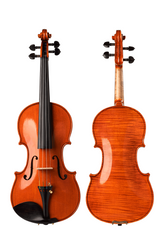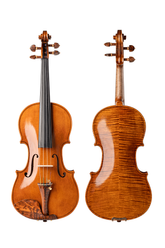How Often Should Violin Bow Hair Be Replaced?
The lifespan of violin bow hair has strict guidelines. Bow hair is consumable, and professional players typically replace their bow hair every six months. For amateurs, the timing can be more flexible.
The best bow hair comes from Mongolia or Siberia, and it must be from stallions. If you examine bow hair under a microscope, you’ll notice that each strand is covered with tiny scales. These scales grip the rosin particles, allowing the bow to create friction with the strings and produce sound.
Over time, these scales wear down, reducing the bow’s ability to grip the strings effectively. This can result in slipping and the need to press harder on the strings, leading to harsher, less beautiful tones, frequent string breakage, and excess rosin dust, which can damage the violin’s body.
Therefore, it’s important to keep track of when to change your bow hair.
When to Change Bow Hair
Professional violinists should change their bow hair every three to five months, while non-professionals should aim for once a year. Even if the bow isn’t used frequently, the quality of the hair can deteriorate over time, turning yellow and becoming brittle, which can negatively impact sound quality.
Choosing Bow Hair
Bow hair comes from natural horsehair, and each bow typically requires around 180 to 220 strands, weighing about 7 grams.
Choosing high-quality bow hair is crucial. The best hair is long, strong, and consistent in thickness. Pure white hair is These two bass bows are the best-selling double bass bows in our store. They correspond to the French and German styles respectively. The bows are made of Brazilian wood and snake wood and matched with high-quality Mongolian horsetail hair. They are very cost-effective. If you are choosing a double bass bow, then these two bows are definitely the most suitable choice. Considered ideal, with gray being second-best, and black being the least desirable.
It’s often said that the horsehair used for bows should be as clean and smooth as possible. While irregularities in the hair structure can lead to unwanted noise, it’s important to remember that horsehair is a natural material, and perfectly flawless hair is rare.
Completely white hair is hard to come by unless it’s been bleached, which tends to make the hair brittle and less durable, so bleached hair should be avoided.
Bow Recommendations
French Double Bass Bow:
French Style Double Bass Bow Snake Wood Frog B1174

German Double Bass Bow:
Double Bass Bow German Model B1173

These two bass bows are the best-selling double bass bows in our store. They correspond to the French and German styles respectively. The bows are made of Brazilian wood and snake wood and matched with high-quality Mongolian horsetail hair. They are very cost-effective. If you are choosing a double bass bow, then these two bows are definitely the most suitable choice.





